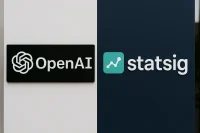In a bid to regulate digital lending practices, the Reserve Bank of India (RBI) has issued new guidelines permitting the utilization of first loss default guarantee (FLDG) arrangements, albeit with stringent conditions.
Previously, the RBI took action against FLDG lending models where fintech companies assumed the default risk by providing a guarantee to the lender for loans extended by finance companies or banks.
According to the latest RBI guidelines, the guarantee provided must take the form of a cash deposit, fixed deposit with a lien, or a bank guarantee favoring the lender.
Read LinkedIn launches free identity verification feature in India
Furthermore, entities regulated by the RBI can only engage in default loss guarantee agreements with lending service providers or other regulated entities with whom they have established an outsourcing agreement.
These guidelines are applicable to various entities including commercial banks, small finance banks, co-operative banks, non-banking financial companies (including housing finance companies), and lending service providers (LSPs).
The FLDG arrangements must strictly adhere to specific criteria outlined in the circular and should not be classified as synthetic securitization or loan participation.
Need Career Advice? Get employment skills advice at all levels of your career
The circular comprehensively covers various aspects such as eligibility, structure, forms, caps, recognition of non-performing assets (NPAs), regulatory capital treatment, invocation, tenor, disclosure requirements, due diligence, and customer protection measures.
Suresh Ganapathy, an analyst with Macquarie, said, “On first reading, it is onerous for fintechs as well as REs (regulated entities) who will enter into FLDGs. There is already a 5% cap, and NPA recognition is tighter for REs. My view is that this isn’t going to take off in a big way.




